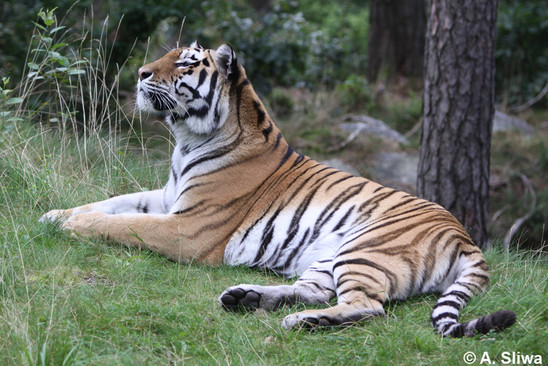Tiger
Amur tiger (P. t. altaica)
According to the revised taxonomy of the Felidae, the tiger subspecies Panthera tigris altaica is included into the subspecies Panthera tigris tigris. However, the Amur tiger is still recognised as a seperate managemetn unit.
The former subspecies P. t. altaica, Siberian or Amur tiger, was classified as Endangered by the IUCN Red List. It is virtually confined to the Russian Far East, although a few may survive along China’s northeast border area and possibly also in North Korea.
The Russian tigers are located in Primorye territory with a smaller population in Khabarovsk. The Russian tiger population had fallen as low as 20-30 animals in the 1930s, but recovered due to protection from hunting in 1947. It made a spectacular comeback and a comprehensive census in the mid-1980s estimated a minimum of 250 and a maximum of 430 tigers. In 2010 the population was estimated to number between 430-500 individuals. However, the population is again declining. The main reasons are poaching of tigers as well as hunting of their wild prey species. Around 70-80% of all tiger mortality is caused by human activity, mainly poaching. The genetic diversity of the Amur tiger seems to be markedly low with an extraordinarily low population size reflecting the recent population bottleneck of the 1940s. More than 90% of the remaining Amur tigers are found in the Sikhote Alin mountain regions and there is little genetic exchange with the subpopulation found in the Primorye province. The population occurring in China is not viable and depends on animals moving in from Russia. Its occurrence in North Korea is uncertain. The Amur tiger is particularly susceptible to habitat destruction and fragmentation as it requires large areas.


